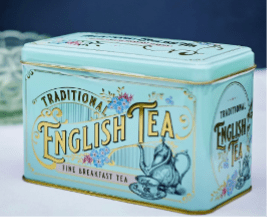The goal is to keep the quality, i.e. the flavour, for as long as possible. The simplest approach is not to buy too much tea at one time because tea producers and resellers, at least the ones with exquisite brands, are usually well-equipped to store tea in optimal conditions. If you collect a few different flavours, then you still end up having to store a reasonable amount of tea. Thus, you must take care of storage.
There are four things you have to pay attention to when storing teas: light, temperature, humidity, and odors.
Let’s debunk the first myth: Storing tea in the fridge is far from optimal. A fridge is cool and dark – two conditions which have to be met by optimal tea storage – but it is too humid and most of all packed with other scents from foods. Ok, you could circumvent the smell problem by putting the teas in an air-tight container. Then they quickly fill up the whole fridge which might leave you hungry, but with a great tea time experience.
Luckily temperature is the least sensitive of the parameters for good tea storage. As long as you don’t expose it to above room temperature and below freezing (water starts freezing at 4 degrees), then you are fine. Keep the temperature constant. I just keep my tea containers in a cool place in the flat; this is not the kitchen. It is a pity as there are nice tea containers which you might like to display. You can display them on a kitchen shelf, but don’t put tea in them. The humidity and temperature changes in a kitchen are bad for your tea.
Let’s start with the easiest: Light, or better darkness. This is the reason why there is a rich culture of nicely decorated tea boxes made of tin, porcelain, and wood.



Glass containers should not be on this list as they do not provide a dark environment. But putting them into a cupboard solves the problem easily.
Each one of these container types comes with its disadvantage about the other criteria an optimal tea storage should have. It is hard to control the humidity in tin, porcelain, and glass containers. Hence, you rely on the humidity of the environment in which you put these containers. To control the humidity in summer and winter is a bit of a challenge in central Europe. The heating produces usually dry air and hot summer weather can be humid.
A wooden box’s weak points are exposure to odors and temperature. Luckily these are the easier ones to control. Built out of the right wood, a wooden box has a natural tendency to balance humidity. And one can even go a step further: A humidor – a wooden box with humidity control. The question is whether one can achieve humidity control without too much effort. And the answer is yes. Similar to a humidor for cigars, a cedar box containing a small, humid sponge can deliver stable humidity.

Green tea should be stored in at most 60% humidity, preferably a little lower. Some references say that black tea can be stored up to 70% humidity.
If you want to be fancy – a true tea fancier – then you can consider buying a humidor for your tea.